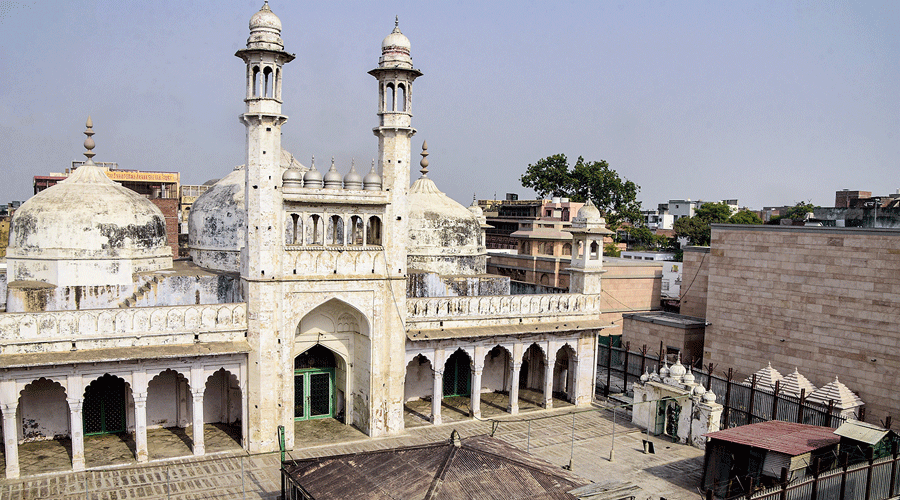The Jamiat Ulama-i-Hind on Monday approached the Supreme Court arguing that quashing the law that stipulates status quo at religious places would “open floodgates of litigation against countless mosques” and widen “the religious divide from which the country is recovering in the aftermath of the Ayodhya dispute”.
Some Hindu petitioners have challenged the Places of Worship (Special Provisions) Act, 1991, which mandates that the character of a place of public worship cannot be changed from what it was on August 15, 1947, except for the Ram Janmabhoomi-Babri Masjid plot.
These petitions come at a time Sangh parivar supporters have filed cases in various lower courts seeking handover of the Gyanvapi and Shahi Idgah mosques in Varanasi and Mathura respectively, claiming they were built after destroying temples at these sites. The 1991 law, however, is a hurdle to the possibility of such handovers.
In the apex court, Hindu petitioners led by advocate Ashwini Upadhyay have challenged the 1991 law’s constitutionality, arguing that by restricting Hindus’ right to reclaim places of worship that had been forcibly converted to those of another religion, it validates alleged vandalism by invaders.
The apex court is yet to issue a formal notice to the government on the pleas challenging the 1991 law.
The Jamiat, a body of Islamic scholars, has sought to implead itself in the case, arguing “there is a list of numerous mosques which is doing the rounds on social media, alleging that the said mosques were built allegedly by destroying Hindu places of worship”.
“Needless to say,” it has argued, “that if the present petition is entertained, it will open floodgates of litigation against countless mosques in the country and the religious divide from which the country is recovering in the aftermath of the Ayodhya dispute will only be widened.”
According to the joint application moved by the Jamiat and its secretary, Gulzar Ahmed Noor Mohammed Azmi, through advocate Ejaz Maqbool, the objectives of the 1991 law were recognised by the five-judge Constitution bench that decided the Ayodhya dispute in favour of Hindus.
The application cites the apex court’s observation that the 1991 law was a legislative instrument designed to protect the Indian polity’s secular features, which make up one of the basic features of the Constitution.
The Jamiat says that on September 10, 1991, the then Union home minister had explained the law’s objective in the Lok Sabha, saying it was meant to discourage the creation of new disputes and the raking up of old controversies “which had long been forgotten by the people”.
According to the Jamiat, the 1991 law is an affirmation of a secular State’s duty to preserve and protect the equality of all faiths.
Section 3 of the 1991 act debars the conversion of a place of worship of any religious denomination, or a section of it, into a place of worship of a different religious denomination or of a different segment of the same religious denomination.
Section 4 preserves the religious character of a place of worship as it existed on August 15, 1947.










